................................................................................................................................................................
Breakpoint
Chlorination
Chlorination
by Orenda Technologies
Breakpoint chlorination is a key concept in pool
chemistry.
In May 2017, we published a two-part article about
pool sanitizers. In part one we compared different chlorine
types, and their pros and cons. This article dives deeper into the science of
chlorination. We explore the difference between breakpoint chlorination and
hyperchlorination (shocking).
What
is breakpoint chlorination?
Breakpoint
chlorination is the point where chlorine levels exceed the oxidant demand, and
the water begins to build a residual of free available chlorine (FAC).
Theoretically,
exceeding the “breakpoint” prevents increased levels of disinfectant byproducts
(like chloramines).


Let's
look at the graph above. When you first add chlorine to water, it immediately
begins to oxidize metals like iron and manganese, which reduce chlorine.
This
initial reaction wipes out a certain portion of chlorine, which is why nothing
shows up on the graph until point (A).
As
more chlorine is added to water, it reacts on contact with other contaminants —
not just germs, but non-living organics and nitrogen compounds too — which
create byproducts.
Organics
are carbon-based, and get oxidized by chlorine, further reducing it.
But
nitrogen? Nitrogen is not oxidized so easily.
Ammonia
(NH3) and nitrogen-based contaminants like urea get oxidized, and become
variations of chloramines when combined with chlorine.
 This
will be explained more in depth in a moment... but know that chloramines
actually carry some disinfection potential, and therefore are measured with
total chlorine... initially.
This
will be explained more in depth in a moment... but know that chloramines
actually carry some disinfection potential, and therefore are measured with
total chlorine... initially.
So
what happens to ammonia (NH3) when met with hypochlorous acid (HOCl)? Well,
chlorine starts replacing hydrogens.
Let's
start with ammonia.
2NH3
+ 2HOCl → 2NH2Cl + 2H2O
Ammonia
+ Hypochlorous Acid yields Monochloramine + Water
Notice
that one of the three (3) Hydrogens in the ammonia was replaced by a Chloride
(Cl).
2NH2Cl
+ 2HOCl → 2NHCl2 + 2H2O
Monochloramine
+ Hypochlorous Acid yields Dichloramine + Water
Here
again, one more Hydrogen has been replaced by a Chloride (Cl).
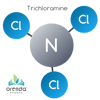 And
of course, even further chlorination yields the most noxious of chloramines
that off-gasses from pools, Nitrogen Trichloride, aka Trichloramine (NCl3):
And
of course, even further chlorination yields the most noxious of chloramines
that off-gasses from pools, Nitrogen Trichloride, aka Trichloramine (NCl3):
NHCl2
+ 3HOCl → NCl3 + 3H2O
Dichloramine
+ Hypochlorous Acid yields Trichloramine + Water
Finally
all Hydrogens have been replaced by chlorides to create Nitrogen Trichloride.
Chloramines
are [weak] disinfectants
As
noted before, chloramines are disinfectants -- which is why they are referred
to as disinfectant byproducts (DBPs).
In
fact, many water treatment plants add chloramines to their water as a secondary
disinfectant.
Albeit
weak and slow, chloramines first contribute to the total chlorine levels
because they help with disinfection.
This,
however, reaches a threshold where chlorine turns on chloramines, indicated at
point (B).
In
other words, chlorine oxidizes all contaminants, which includes chloramines
after point (B) on the graph.
That's
why the total chlorine level drops with the addition of more free chlorine (the
X axis on the graph).
The
downward trend on the graph shows chlorine starting to "win the
fight" against contaminants until it oxidizes all but the combined
chlorine residual.
This
level of chlorine residual is shown on the graph at point (C).
If
chlorine cannot overcome the oxidant demand, your water's chlorine demand
rises, and the ORP drops.
This
would look like a more prolonged downward trend toward breakpoint, because
breakpoint would be at a much higher dose of chlorine.
When
the chlorine can meet the oxidant demand, the water has reached breakpoint
chlorination.
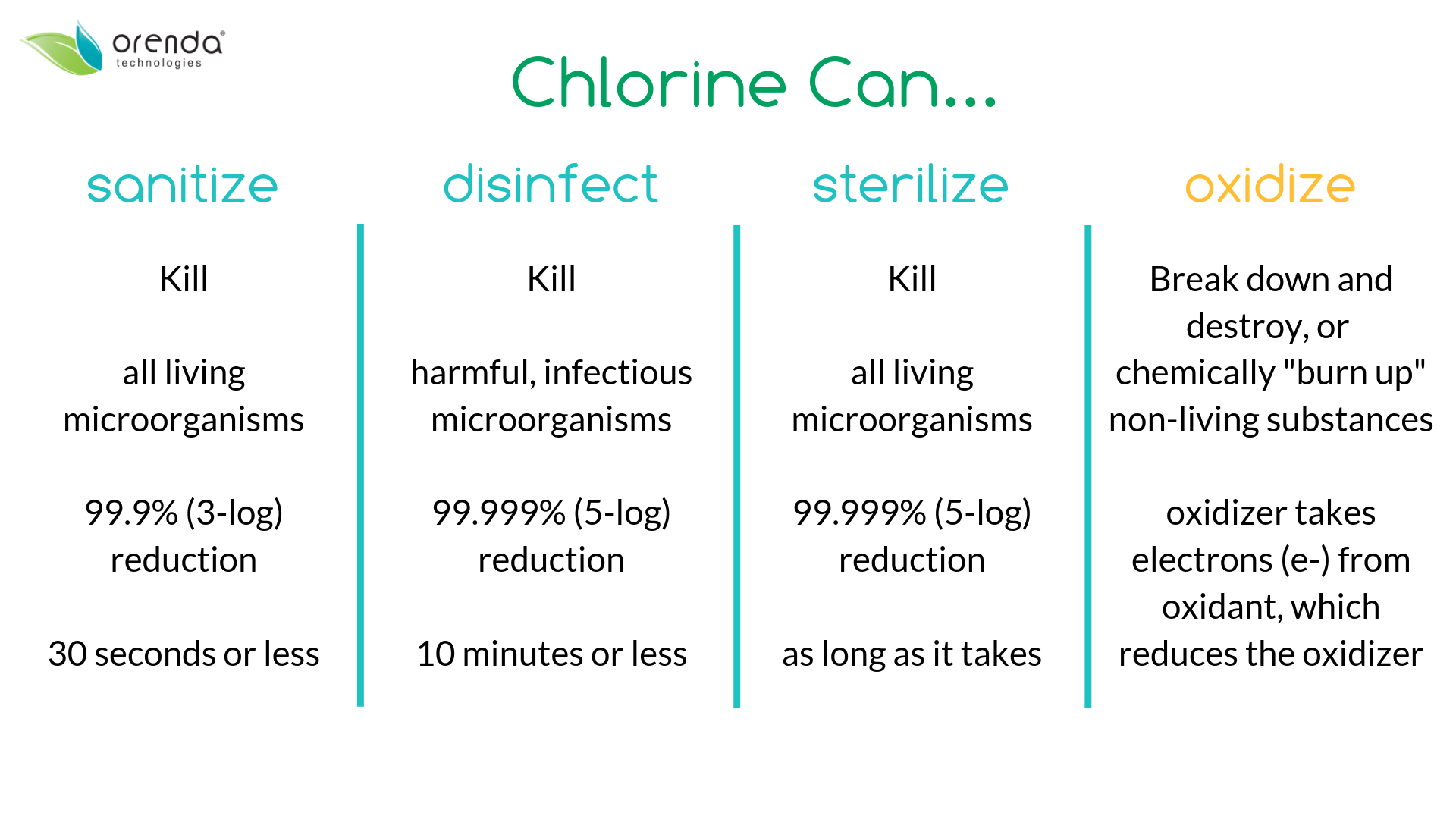
FAC
residual after breakpoint chlorination
Only
after the oxidant demand has been addressed can disinfection occur.
Therefore,
only after breakpoint chlorination has been exceeded can a residual of free
chlorine build. Up until that point, chlorine has its hands full trying to
oxidize its way to breakpoint.
Free
available chlorine (FAC) is needed as a residual sanitizer in the water.
Combined
chlorine (CC) is the chlorine that combined with ammonia and other nitrogen
compounds (including chloramines and other DBPs).
Combined
chlorine is the most accurate measurement of disinfectant byproducts we can
test for.
Total
available chlorine (TAC) = FAC + CC. We measure all types of chlorine in
parts-per-million (ppm).
Just
remember, test kits cannot tell the difference between hypochlorous acid
(HOCl), and its dissociated, weak form, hypochlorite ion (OCl-).
So
even though you may read a good amount of free available chlorine (FAC), if
your pH is high or you have high phosphates, you may still have weak chlorine
in your water. If so, your ORP will reflect that.
You
can calculate any of the three with addition and subtraction. Most test kits measure free and total chlorine,
so you simply subtract:
Total
Chlorine - Free Chlorine = Combined Chlorine
To
eliminate combined chlorine, it takes a surge of chlorine, called
hyperchlorination (or shocking) to overcome the load.
The
conventional wisdom in the pool business is a shock of 10x your combined
chlorine level in additional free chlorine.
But
according to renown chemist Richard Falk, the 10x figure is not accurate. Here
is a direct quote from Richard on the PoolGenius Network forum:
"The molar ratio of chlorine to ammonia is 1.5:1
or 3:2, but since ammonia is measured in ppm N units while chlorine is measured
in ppm Cl2 units, with the factor of 5.06 difference this is a ppm ratio of 7.6
to 1.
“Because forming dichloramine requires 2 moles of
chlorine for 1 mole of ammonia and because of side reactions that can occur,
the actual chlorine to ammonia ppm ratio is around 8-10x which is where the 10x
rule came from.
“However, this is wrong since CC is in ppm Cl2 units
(so no factor of 5.06) and monochloramine already has 1 of the 1.5 chlorine
attached to it already.
“To oxidize monochloramine, it takes from 0.5 to 1.0
times the CC level. Even if the CC were
urea, it takes 2-3 times the CC level, not 10x.
Of course, the higher the FC level the faster reactions occur, but there
is no magic 10x amount." - Richard Falk
Hyperchlorination
(shocking)
If
your swimming pool struggles to reach — and exceed — breakpoint chlorination,
the chlorine you have is not enough to do the job.
The
oxidant demand is greater than the chlorine available to handle it.
The
oxidant demand in these cases can be chloramines, non-living organics, or any
combination of both.
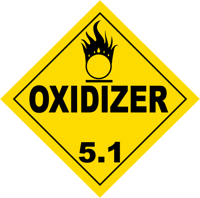 If
you’re shocking your pool frequently to reach breakpoint chlorination, ask
yourself how you got there.
If
you’re shocking your pool frequently to reach breakpoint chlorination, ask
yourself how you got there.
Clearly
the normal chlorine levels in your pool are not enough to meet the demand. So,
think about how the demand itself got there.
High
combined chlorine is generally because of ammonia being introduced to the pool.
Find out what chemicals are being used in and around the pool.
Think
of pool deck cleaners (many of them are ammonia-based), and algaecides (many of
them are also ammonia-based).
We
are in favor of a minimalist approach. Why throw more chlorine at the problem,
without making an effort to discover the root cause of the problem?
Chlorine
is not designed to be a primary oxidizer! It is designed to be a sanitizer and
disinfectant.
If
you are routinely hyperchlorinating your pool, we hope you will reconsider your
practices.
Applying
the right chemistry for the right situations can minimize costs, maximize
efficiency and improve the overall swimmer experience.
If
we do it right, breakpoint chlorination will be easy to reach, and you can have
a safe residual of free available chlorine to keep the water safe. Identify the
sources of ammonia, and prevent them from getting in the water.
We
also recommend supplementing chlorine with enzymes to remove non-living
organics and oils.
Orenda
Technologies. Water is a precious
resource, and we strive to make it clean and beautiful. Orenda has a philosophy
of minimalism, and proactive pool care. Why be proactive? Because prevention is
always easier than correction, and we want to help educate the pool industry
and pool owners about it. The vast majority of pool issues are preventable, and
that's why we published our Four Pillars of Proactive Pool Care.
For many years, Orenda was
primarily a speciality chemical manufacturer, building a business on
quality, professional-grade products and reputation. We have
since evolved into an education company. We have invested heavily in building
the pool industry's leading mobile app and dosing
calculator, have a library of helpful videos, and a growing list of educational
articles in our blog. In 2019 we released Orenda Academy, which is
another free resource for anyone to learn more about pool management.
We want to deliver the best
water quality possible, with the fewest chemicals. The Orenda line of
professional grade, eco-friendly speciality pool chemicals help our customers
get there. But our chemicals merely complement our program, which is a series of
improved habits and behaviors to optimize water management.
Let’s stop guessing and
“eyeballing it”, and instead dial in our behavior and habits. Orenda is here to
help.

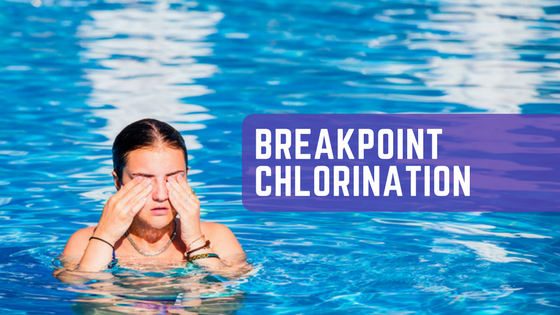

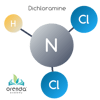
No comments:
Post a Comment